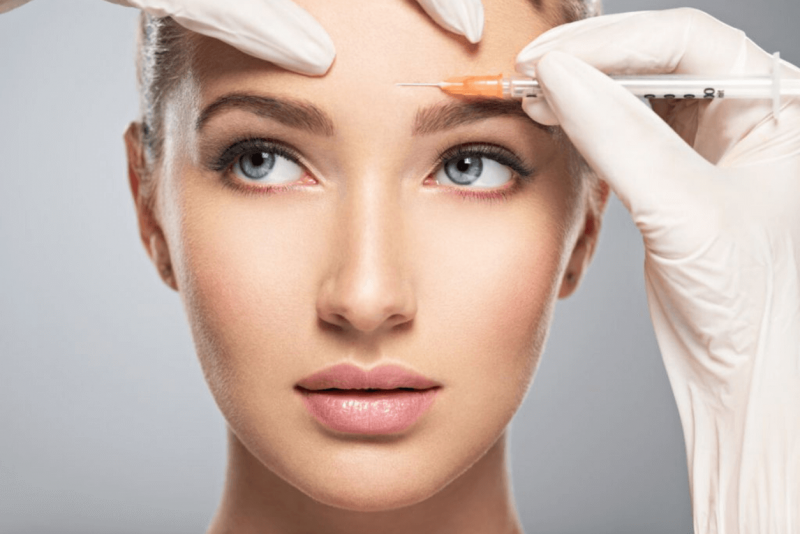
A Short And Interesting History Of Botox
Nearly everyone has heard of botox these days, it has become one of the most popular cosmetic treatments to receive, but how much do you really know about this firm favourite of the cosmetic industry?
The history of botox is quite extensive, so let’s have a look at a brief history now.
What Is Botox?
Before we go delving into the history of this remarkable treatment, it’s always useful to know what exactly botox is, and how it works.
Many naysayers will tell you that botox is poison, and this comes from the name of the bacterium from which we derive the botox injections used across the world.
The full name for botox is Botulinum toxin, and comes from the bacterium Clostridium botulinum. This may sound familiar, because clostridium botulinum causes the illness known as botulism – which comes in many forms, but it is often associated with incorrectly canned or jarred food.
Botulism causes paralysis of the muscles of the face, before spreading to the rest of the body, causing paralyisis of the breathing muscles, which can cause death.
However, botox injections are carefully curated within a laboratory setting, and only small amounts are injected to achieve the desired results, so there is no need to worry about developing botulism.
Botox injections are administered to work by freezing or paralysing the muscles they are injected into, resulting in a smoother and more youthful appearance. If it is injected into an area where the client is concerned about wrinkles, for example, the forehead, the botox works by paralysing the muscles in that area, and therefore no wrinkles can form.
Botox can also be used in a medical setting for illnesses such as excessive sweating, and the botox is used to paralyse the sweat glands in that area.
Botox lasts around three or four months before it starts to wear off.

The Discovery of Botox
The bacterium from which botox injections are derived, clostridium botulinum was first discovered by a scientist in Belgium, called Emile Pierre van Ermengen, who was researching the cause of a botulism outbreak in the local area in 1895.
In 1928, botulinum toxin A was discovered at the University of California in San Francisco by Dr H Sommer.
Unfortunately, more research into Clostridium botulinum meant it became used as a method of biological warfare, and was of huge concern for those on both sides of World War Two. Luckily, it was not really used in a mass weaponry way at this time.
Further scientists did more research into this subject, and it was in the 1940s that Dr Edward Schantz was successful in isolating the botulinum toxin.
It wasn’t until another thirty years later, when some medical scientists were doing medical trials, that the full range of botox injections started to be appreciated.
It was well known at this point that botox injections caused muscle paralysis, and was being tested on chimps to see its effect on those with crossed eyes or twitching eyelids. It was noted during these trials that wrinkles on the chimp’s faces, most noticeably between the eyes, were much reduced, and this led to botox being tested for it’s cosmetic value as well as medical one.
In 1987, a Canadian doctor was treating a patient suffering with blepharospasm with botox, and the patient noted that when the injections were given within the area of the forehead, her wrinkles were much less noticeable.
From here on out, the cosmetic uses of botox were more thoroughly researched, and started to be available much more commercially, such as botox injections from Revitalize You and other cosmetic clinics.
Commercial Use Of Botox
Over the next twenty or so years, botox was approved by the FDA for a whole manner of different uses.
Doctors could also use their discretion and use botox in a non-FDA approved way, as long as they had the informed consent of the patient.
The first commercially approved usage of botox was for strabismus and blepharospasm – that is crossed eyes and twitching eyelids. Botox was approved for use in this way in 1989.
It took another ten years for the next approval from the FDA, and this was for cervical dystonia in 2000. Cervical dystonia is an incredibly painful condition that causes the neck muscles to contract and twist, causing the sufferer’s head to move into uncomfortable positions, with a great deal of discomfort.
From then on, botox was quickly approved for frown lines in 2002, excessive sweating in 2004, migraines in 2010 and crows feet wrinkles in 2013, along with approval for many other uses during this time.
However, botox was used to treat a whole manner of facial wrinkles before this, with the patient’s consent.

Cosmetic Use
Botox really came to the public’s notice in the early 2000s, with many celebrities having this innovative treatment performed on any wrinkles that they didn’t want to have.
Botox was almost a buzz word at this point, and whilst it was originally quite expensive and therefore only for the rich and famous, an increase in demand drove down the price making it far more accessible for everyone.
Botox quickly gained a bad reputation however, as many people who had it, had too many areas worked on, resulting in a completely frozen face that had a somewhat waxy, shiny sheen to it.
This meant that botox fell out of favour for a while, as there are not many people who aspire to the completely immobile face, as this can often age someone, the opposite of what they’re hoping for.
However, with the rise of social media and influencers, botox is having a revival. The trend now is to have very small doses of the drug injected, so the muscle is only paralysed a small amount, making the wrinkles much less obvious, but still allowing for some movement of the face.
If botox is something that you are considering, have a full, thorough consultation with a licensed doctor first, and you can both discuss what is wanted and what is achievable, and any risks you might face.









